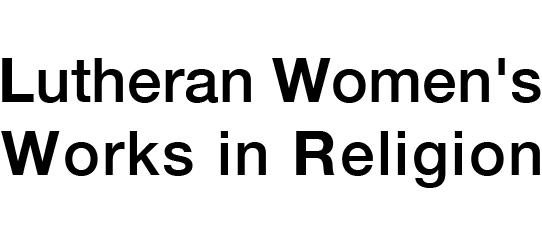Category: Church History and Historical Theology
BOOKS
Kirsi Stjerna No Greater Jewel: Thinking of Baptism with Luther., Augsburg Fortress 2009A study of Luther‘s theology of baptism, in light of historical, spiritual and ecumenical concerns, for a general audience, with study questions.
A textbook, introducing several women in their leadership roles and with their theological interests, as well as offering a look at women‘s gains and losses with the Reformations.
ENCYCLOPEDIAS
Kari Kloos "Angels and Angel-like Beings: Medieval Times and Reformation Era" In Encyclopedia of the Bible and Its Reception. Berlin: Walter De Gruyter 2009An overview of medieval development of the theology of angels and of Reformation critiques.
An overview of the post-biblical development of the theology of angels in patristic Greek and Latin sources.
JOURNAL ARTICLES
Brenda Llewellyn Ihssen "Smashing God‘s Face: Art, Theology and Violence in the Byzantine Empire" 21.1 In ARTS: The Arts in Religious and Theological Studies. 2009This essay explores ways in which sources might demonstrate closer congruence than has previously been considered of the infamous iconoclast Emperor Leo and the theology of the iconoclasts to the iconodule position. Hagiographic, historical and legal sources are consulted to consider the context within which Leo‘s position will emerge; second, through analysis of select theological documents of both iconoclasts and iconodules—texts roughly contemporary with Leo‘s actions against icons—this essay addresses how structures held as ‗iconic‘ by the iconoclasts are understood within the theology of the iconodules in a manner similar to the iconoclasts, and concludes with a call for a reconsideration of the iconoclastic and heresiarch titles which Leo has borne, in addition to that of “emperor.”
This article considers the two ―Lives‖ of St. John the Almsgiver, a seventh-century Patriarch of Alexandria. Unlike the average life of a saint, St. John‘s two biographies are alarmingly tame, and normal elements of such literature—miracles, ascetic works, divine visions—are conspicuously absent. But careful attention to the largely-ignored Lives of St. John reveals that through the defense of doctrine and care for the poor, this bishop sought to transform the city of Alexandria and redeem it for an Empire balanced on the threshold of political and religious chaos.
Significant features in Gregory of Nyssa‘s sermon Contra usurarios indicate that the younger brother of St. Basil the Great did not merely imitate the latter‘s earlier contribution on the destructive and corrosive nature of usury. Gregory‘s homily has an internal integrity that sets it apart from Basil‘s Homilia in psalmum 14. Though they used common themes when writing about usury—theft, falsehood, anxiety, enslavement, heavenly usury, and the natural world—Basil and Gregory approached these themes differently, were inspired and influenced by different Scripture and philosophy, and had different motives.
Explores early Christian (2nd through 4th century) exegetical claims that Christ appeared in the Old Testament, arguing that similar ―audacious hermeneutical leaps‖ created continuity in periods of theological and spiritual crisis. However, managing such threats of discontinuity often created further problems.
Explores different forms of ancient Christian (2nd to late 4th century) interpretation of Galatians 3:28, considering views on baptism, asceticism, and social hierarchy.

